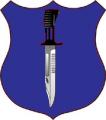(
#1) Our officiers can speak volumes on the theory of tactical employment of IFVs at the combat team and higher, but we've never seriously figured out how we're going to tactically integrate these vehicles within the infantry compan y.
#2 The crewed vehicle concept ... requires the establishment, training and maintaining of dedicated crews for each vehicle. [...]
#3 One of the most awkward moments in the operations of an M113 or GRIZZLY company was the dismount. The delay and loss of continuity (of fire, observation and control) as the commander switched with the gunner was always simply "accepted" as part of the cost of doing business. [T]he [LAV] turret basket requires that the gun be traversed centre before the crew commander can dismount through the hull. this means every vehicle dismounting its creww commander will surrender the tactical advantage of a 25mm stabilised chain gun firing on the objective.
#4 At all levels, the infantry commander is the leader of the dismounted force and its supporting LAV component. The LAV APC is a firepower, mobility and protection asset supporting the ground battle waged by the dismounted infantry - but it must be crewed and directed with as much consideration as any other component of the battalion's combat power.














Bookmarks